Strategic planning is one of the top five management techniques used worldwide.
As that, leaders can hardly go wrong about endeavoring on a strategic planning journey.
Here are five things you should know about strategic planning that can help you make the most of your strategic planning process:
- A compelling mission or purpose strengthens organizational culture
- Strategic plans contribute to a healthier organization
- Leadership makes or breaks a strategic planning process
- A formal process contributes to satisfaction and success
- Accomplishment-based strategic objectives provide clarity for execution
1. A Compelling Mission or Purpose Strengthens Organizational Culture

Having a compelling mission statement can have a strong positive impact on hiring and recruiting.
An overwhelming nearly nine in ten (89 percent) adults believe it is important for an employer to have a clear mission and purpose, with responses very similar across all countries surveyed.
Nearly eight in ten (79 percent) would consider a company’s mission before applying for a job there, demonstrating just how important a clear mission is to recruitment.
73% of employees in a purpose-driven organization are engaged.
Compare this to the global average engagement of only 23%.
These data show that it is imperative to create compelling mission or purpose statements.
2. Strategic plans contributes to a healthier organization
In his book, The Advantage, bestselling business author Patrick Lencioni talks about “Why Organizational Health Trumps Everything Else In Business.” Lencioni emphasizes that an organization cannot succeed based solely on a good strategy or technology or marketing.
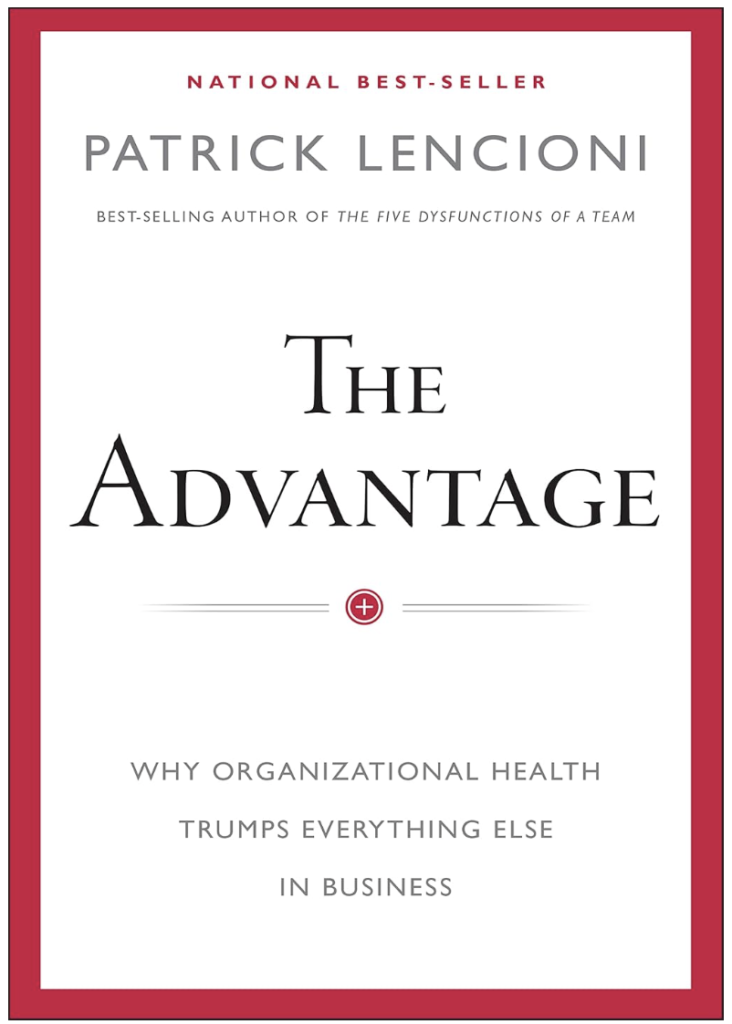
Instead, today’s competitive advantage is based on creating clarity throughout the organization.
Clarity refers to the notion that organizational leaders are clear on the core purpose of their organization, how they envision its future, and what the priorities are for the next quarter or year.
Clarity communicate answers to questions that employee may ask:
- Where are we going? (Vision)
- How will we get there? (Goals and Objectives)
- How will we know we have arrived (Measures)
These questions are typically answered in a strategic plan.
By embedding the organization’s mission, vision, and values and goals within all human systems—from recruitment to separation—leaders can establish a consistent application of the key drivers of organizational culture.
3. Leadership makes or breaks strategic planning process
According to business guru Ron Carucci, leaders don’t spend much time on strategy.
“One study reports that 70% of leaders spend on average one day a month reviewing strategy and 85% of leadership teams spend less than an hour per month discussing strategy.”
Strategy experts Robert S. Kaplan and David P. Norton state that according to their research “85% of executive leadership teams spend less than one hour per month discussing their unit’s strategy, with 50% spending no time at all.”
A report by The Economist Intelligence Unit published in 2013 confirms the important role of leadership in strategic planning. On behalf of the Project Management Institute, EIU surveyed 587 senior executives globally and further conducted in-depth interviews with the following finding: Leadership buy-in and support considered the number one reason for success of strategic initiatives.
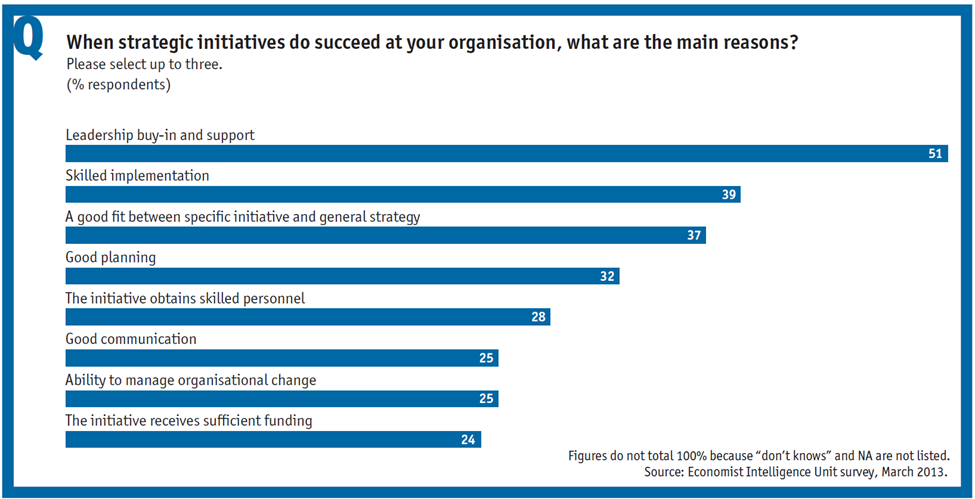
4. A formal process contributes to satisfaction and success
Research by Renée Dye and Olivier Sibony from McKinsey & Company conducted research on factors that contribute to the satisfaction and success of strategic planning processes. They report that formal strategic-planning processes play an important role in improving overall satisfaction with strategy development.
- 79% of managers claimed that the formal planning process played a significant role in developing strategies and were satisfied with the approach of their companies.
- 21% of the respondents who felt that the process did not play a significant role were also not satisfied with the process.
- 51% of respondents whose companies had no formal process were dissatisfied with their approach to the development of strategy.
- 20% only were dissatisfied with the planning process of companies with a formal process.
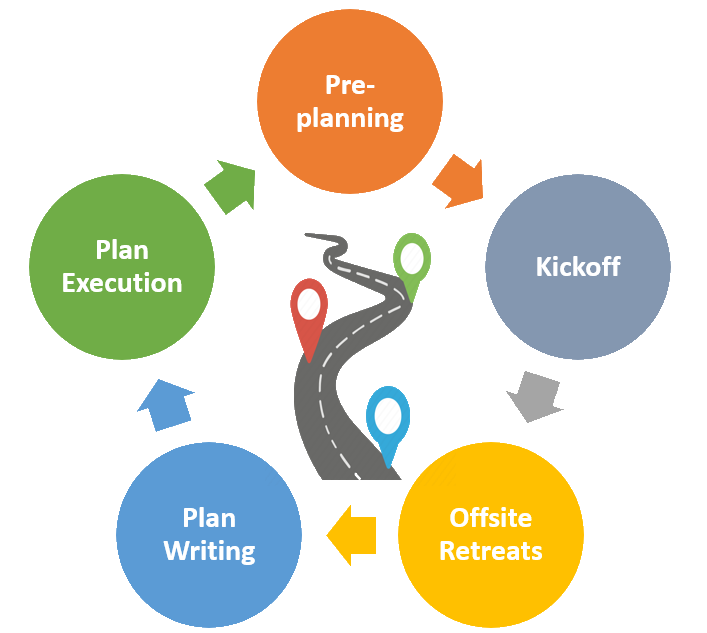
5. Accomplishment-based strategic objectives
One way to tackle problems with strategy execution is to improve the execution process.
For example, Robert S. Kaplan and David P. Norton, the inventors of the Balanced Scorecard, wrote a book on “The Execution Premium” which states if you have an office of strategic management and use it in the right way, then your execution of your strategy is better than that of other organizations which provides you with a competitive advantage.
For many organizations, having their own OSM is not feasible, and it does not need to be.
I have been working with my friend Carl Binder on making strategic plans more executable. Carl developed an approach to performance improvement that is focused on accomplishments.
We applied the design for manufacturing principle to strategic planning. Design for manufacturing involves efficiently designing or engineering an object, generally during the product design stage, when it is easier and less expensive to do so, to reduce manufacturing costs.
We postulate that we can do the same with strategic plans – we can design them in a way that will support effective implementation.
We do so by describing strategic objectives as “accomplishments” rather than behaviors which is the case in many strategic plans. Have you ever been to a meeting that didn’t produce anything? Lots of behavior and activity but no decision or no next steps clearly laid out.
Accomplishments can take the form of deliverables, transaction, decisions, and many other tangible results.
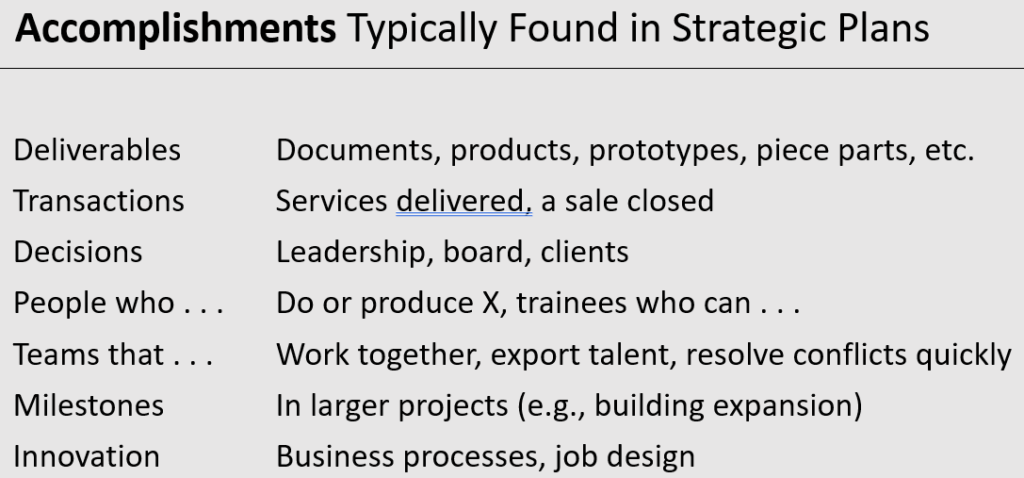
Writing objectives as accomplishments make it clear to everyone what has to be achieved – what work product has to be developed as part of implementing a strategic objective.
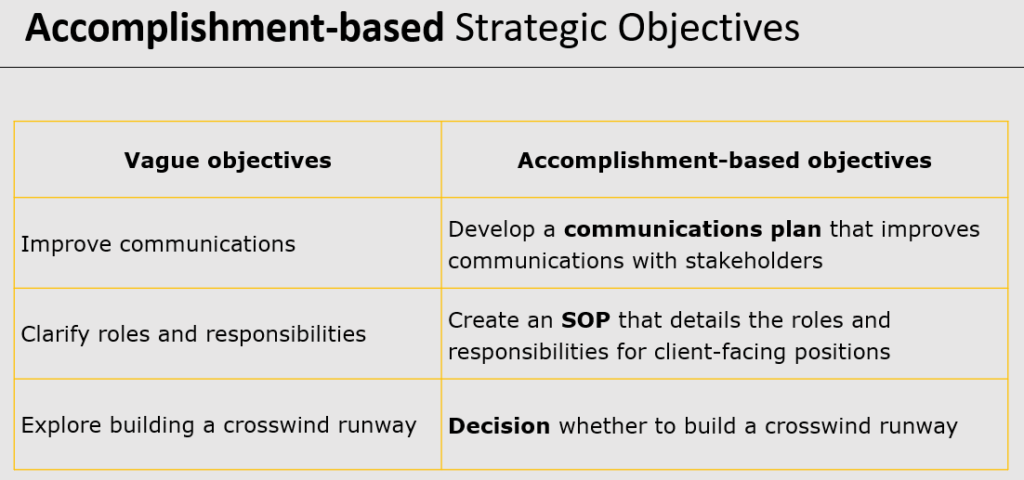
Other means to make strategic plans more executable are to assign target completion dates (deadlines) to each objective. In addition, it is important to identify “leads” – staff who are in charge of an objective. Being the lead does not mean that they are also the “doers.” In most cases, leads work with a team or committee.


